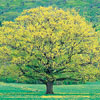Post by castanea on Nov 5, 2012 1:40:58 GMT -5
"Farmers Markets: Red-letter day for Robert Livermore walnuts
The scarlet nuts will soon show up in markets. They make a festive addition on holiday tables.
By David Karp
October 26, 2012, 11:48 a.m.
One of the most surprising recent produce introductions is the Robert Livermore walnut, which will be coming into season in the next few weeks. The trees and the whole nuts look like conventional walnuts, but the thin seedcoat covering the kernel is vivid scarlet.
With such dramatic looks, you'd expect fireworks in flavor. Wine bar guru Lou Amdur praises its "creamy-mellow taste with a backbone of tannic bitterness."
In Europe there's a little-known alternative universe of blood walnuts ("Blutwalnuss" in German), described by pomologists since at least the 18th century. The most common is Red Danube (a.k.a. Rouge de la Donan), which was found growing wild in Austria before 1879. There's even a red-leafed walnut tree in Switzerland. Ruddy varieties tend to be shy bearers, however, and most have less attractive nuts, with a dark purplish or blotchy color compared with the Robert Livermore.
Normally walnut breeders select for light-skinned nuts, which the market prefers. Leslie and two colleagues were thus bucking orthodoxy in 1991 when they crossed Howard, a pale modern variety, with a dusky red selection informally called Red Zinger, which derived from a French collection. They were hoping to investigate the inheritance of skin color in walnuts and to come up with an evenly bright red, commercially viable variety.
The UC Davis breeding team selected the new variety in 1998, patented it in 2001 and named it after Robert S. Livermore (1926-1997), a computer entrepreneur and walnut grower interested in unusual varieties. It was brilliant red and reasonably productive, and seemed promising as a niche variety for farmers markets. Commercially, however, it was problematic, because it was hard to keep separate in processing facilities from regular walnuts, onto which the seedcoat sometimes flaked off."
www.latimes.com/features/food/la-fo-marketnews-online-20121026,0,2795139.story
The scarlet nuts will soon show up in markets. They make a festive addition on holiday tables.
By David Karp
October 26, 2012, 11:48 a.m.
One of the most surprising recent produce introductions is the Robert Livermore walnut, which will be coming into season in the next few weeks. The trees and the whole nuts look like conventional walnuts, but the thin seedcoat covering the kernel is vivid scarlet.
With such dramatic looks, you'd expect fireworks in flavor. Wine bar guru Lou Amdur praises its "creamy-mellow taste with a backbone of tannic bitterness."
In Europe there's a little-known alternative universe of blood walnuts ("Blutwalnuss" in German), described by pomologists since at least the 18th century. The most common is Red Danube (a.k.a. Rouge de la Donan), which was found growing wild in Austria before 1879. There's even a red-leafed walnut tree in Switzerland. Ruddy varieties tend to be shy bearers, however, and most have less attractive nuts, with a dark purplish or blotchy color compared with the Robert Livermore.
Normally walnut breeders select for light-skinned nuts, which the market prefers. Leslie and two colleagues were thus bucking orthodoxy in 1991 when they crossed Howard, a pale modern variety, with a dusky red selection informally called Red Zinger, which derived from a French collection. They were hoping to investigate the inheritance of skin color in walnuts and to come up with an evenly bright red, commercially viable variety.
The UC Davis breeding team selected the new variety in 1998, patented it in 2001 and named it after Robert S. Livermore (1926-1997), a computer entrepreneur and walnut grower interested in unusual varieties. It was brilliant red and reasonably productive, and seemed promising as a niche variety for farmers markets. Commercially, however, it was problematic, because it was hard to keep separate in processing facilities from regular walnuts, onto which the seedcoat sometimes flaked off."
www.latimes.com/features/food/la-fo-marketnews-online-20121026,0,2795139.story


